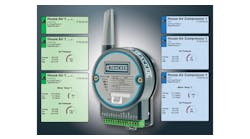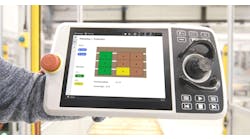Bologna might be known best as the home to the Western World’s oldest university, the University of Bologna, or perhaps for its eponymous cuisine … Bolognese sauce. But this city, situated between Italy’s Po River and the Apennine Mountains, has more recently earned a new nickname: “The Packaging Valley.”
Packaging machinery has become one of the dominant industries throughout Italy. Though the United States, China and Japan all produce automatic machinery, Germany and Italy produce two-thirds of all packaging machinery sold internationally, according to a study by the Confederation of Packaging Machinery Associations. Italy ranks second in production of packaging machinery, with 150 to 200 companies accounting for 17% of the market, behind Germany (23%), and ahead of the U.S. (11%) and Japan (10%).
Italy’s packaging machinery base has emerged globally as a result of an extremely flexible production system, one that is increasingly geared to individual customer's needs, and consisting of highly competitive, small- to medium-sized companies, and manufactures with precision.
But the resiliency of Italy’s packaging machinery industry has been severely tested by the financial recession that has encompassed the world markets. In 2008, growth was less than half of what it had been a year earlier, dropping from 7.2% in 2007 to 3.3%.
According to a report by the Italian Packaging Machinery Manufacturers Association, dramatic deceleration in the U.S. and the European Union economies have caused demand to plummet.
While companies have had to reconfigure their place in the market, some solidified their footing by concentrating on high-growth areas. The Marchesini Group, based in Bologna, for instance, has sought to capture new markets, such as China, India and Russia.
Much of the packaging machinery base has been tied to the packaged foods and beverages markets, which account for nearly 60% of the industry, according to research firm Freedonia. The Marchesini Group, however, has concentrated its machines heavily in pharmaceuticals, which accounts for 90% of its sales, with 8% going toward cosmetics.
But perhaps the strongest trend seen in Italy’s packaging machinery industry is the push toward customization.
“You’ve seen more special and highly customized machines, dedicated to particular requirements of the customers and the specific products to be packaged,” says Piero Tomasi, sales director for the Marchesini Group.
As many companies have sought to produce better machines at a cheaper price, machine production has often been shifted overseas to countries that offer cheaper labor rates. According to Tomasi, this is a self-defeating line of thinking. What differentiates Italy’s machinery is the quality of its production. Less sophisticated workers from off-shore will produce a cheaper product, but it might come at a cost in quality.
“We do not believe that simply buying labor in low-cost countries is sufficient to reduce prices,” says Tomasi. “The challenge is that of being competitive and offering an innovative product that is appreciated on the market, but that is also made in Italy.”
Such a challenge is not limited to one country’s packaging machinery industry, but can be applied in every corner of manufacturing.
This is the third of a series of online reports on manufacturing technology in Italy. Read Part 1 here, and Part 2 here.





